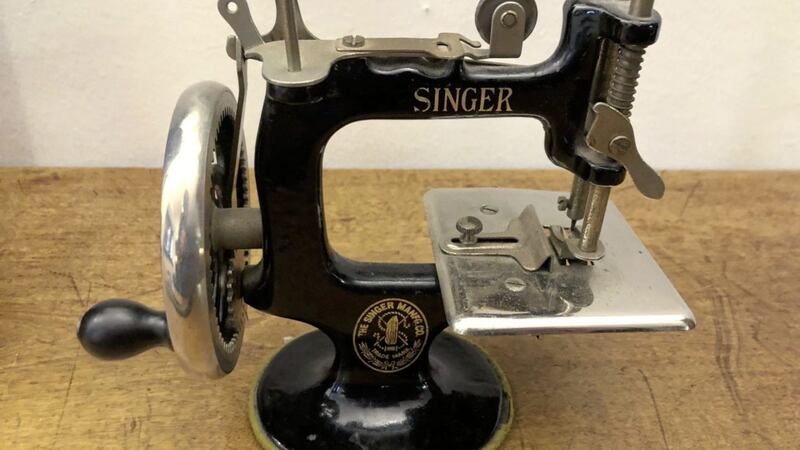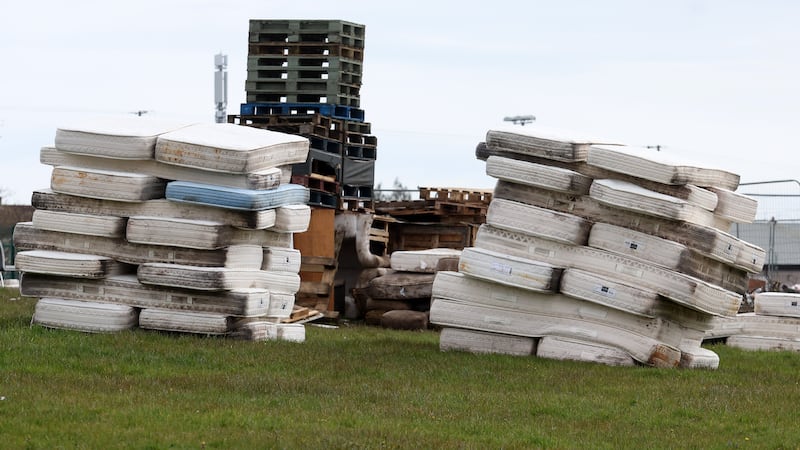A word to the wise. Never let your wife read your column after it’s been printed.
I’m in trouble on two counts after last week’s column on my matchy-matchy appearance at a friend’s wedding.
Apparently the bride’s dress was lilac; but worse, we are not married ‘almost 35 years’, as I so confidently stated. We’ve been married 35-years plus, having celebrated our coral anniversary last July. Well, it was down to the garage pronto for a box of Ferrero Rocher and half a dozen dying chrysanths.
Thankfully she couldn’t get her hands round my neck because she’s entwined in Aran wool at the moment, like a latter day Mrs Havisham wreathed in spiders’ webs on steroids.
My son, 21 in October, prevailed on his mother to knit him a striped jumper for his birthday. When he modelled it, I saw a vision of a deckchair on stilts sashaying around the living room like an aspiring model for GQ magazine.
She’s now knitting one for his sister – 18 last June (it’s a year of big birthdays in our house, including my own). Her stripy number is ochres and olives to his teals and navy. Mine is next – colour combination to be decided. Not peach.
If you added up the price of the wool and her time, the cost of the jumpers comes out dearer than something you’d pick up in a top-end boutique on the Lisburn Road. There isn’t a living to be made in handknit sweaters.
Of course, what’s knit into each jumper has no monetary value whatsoever. It is quite literally priceless. When my son puts on his pullover, he is wearing that most precious gift of all, his mother’s love.
Today we outsource knitting to sweatshops in Bangladesh. It wasn’t always that way. I have happy memories of an Aran jumper that was handknit by my mum. It had a shawl neckline. The way the woollen collar crossed over and embedded itself into the front of the jumper was like a magic trick. I’ve never seen anything like it since – though I have looked.
Less welcome were garments that emerged, from necessity, from the needle of her sewing machine. She sank all her money into the house and our education – two of the most useful things parents can give their children - and she had precious little left to feed and clothe us.
We never starved. But we lived in hand-me-downs and handmade clothes. I blame not being able to swim on being sent to classes in my dad’s overlarge swimming trunks. Holding them up in a mixed class of primary sixers became more important than gripping a floatation device.
Pyjamas were crafted from sweatshirt material, and styled like judo outfits. Mum never mastered the button-hole attachment, and a tie-belt was easier, never mind that the pjs usually fell apart no matter how tight the knot.
We had the misfortune of living near Glendinning’s fabric factory on Lurgan’s Victoria Street. The factory shop was piled high with chintz seconds.
Crimplene was all the rage, before people wised up to wrapping themselves in polyamide and polyester yarn. One of mum’s early efforts was a chic jumpsuit in navy blue and white pinstripe. It was like a tailored plastic bag.
Crimplene in high summer is worse than Chinese water torture. I had a brown crimplene suit too – with slightly wonky buttonholes.
The biggest horror of all befell me in fourth year at grammar school. My school blazer had grown too small, and it was badly frayed. Replacement blazers were the price of a small car, so out came the sewing machine.
Fabric, close to the school colours, was procured from Glendinning’s, and the monstrosity – with slightly misshapen seams, squinted buttonholes, and machine-embroidered school crest – emerged. To me, it was as if Singer Sewing Machines had turned their hand to making Frankenstein’s monster.
To heap embarrassment on embarrassment, the lining was a gaudy chintz – an offcut from a summer dress. ‘No-one will see it,” she said. And I made sure they didn’t. I shudder still to think about it. But I shudder more when I realise how selfish I was not to notice that she had stitched a little love into every thread.









